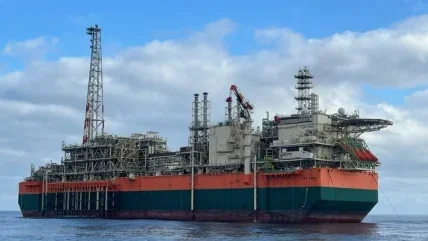
BP has initiated gas flow at the Greater Tortue Ahmeyim (GTA) Phase 1 liquefied natural gas (LNG) project, located along the maritime border between Mauritania and Senegal.
The project is designed to produce up to 2.3 million tonnes per annum (mtpa) of LNG.
The GTA development involves extracting gas from wells situated in water depths of up to 2,850m and processing it on a floating production storage and offloading (FPSO) vessel positioned 40km offshore.
The gas is treated to remove impurities, condensate, and water before being transported via pipeline to a floating liquefied natural gas (FLNG) vessel 10km offshore.
The FLNG facility will liquefy the gas for storage and export, with a portion allocated to meet energy needs in Mauritania and Senegal.
BP production and operations executive vice president Gordon Birrell said: “This is a fantastic landmark for this important megaproject. First gas flow is a material example of supporting the global energy demands of today and reiterates our commitment to help Mauritania and Senegal develop their natural resources.”
BP, as the operator of the project with a 56% working interest, is leading the development alongside partners Kosmos Energy (27%), PETROSEN (10%), and SMH (7%).
The project reached a final investment decision (FID) in December 2018 and is expected to deliver LNG with one of the lowest costs among global greenfield projects.
The FPSO, which arrived offshore Mauritania and Senegal in Q2 2024, is capable of processing more than 500 million standard cubic feet of gas per day. Gas liquefaction is managed by the Gimi FLNG vessel, owned and operated by Golar LNG.
The GTA Phase 1 project has also contributed to regional economic development. Construction activities generated over 3,000 local jobs, with around 300 local companies engaged in various capacities.
Mauritania and Senegal have placed the GTA project as a critical component of their energy strategies, declaring it “a project of strategic national importance” in 2021. The gas field is estimated to have a production lifespan of 30 years.
Once operational, the first LNG production is expected in early 2025, with initial cargoes set to ship in the first quarter, marking the start of revenue generation.






